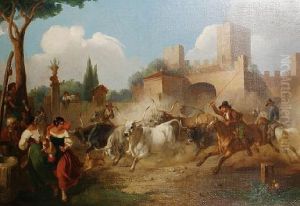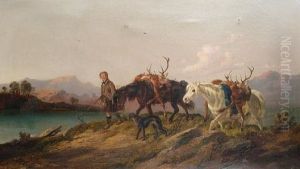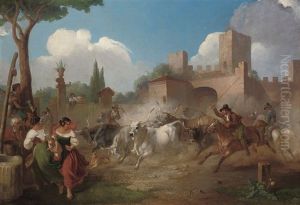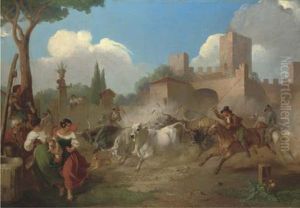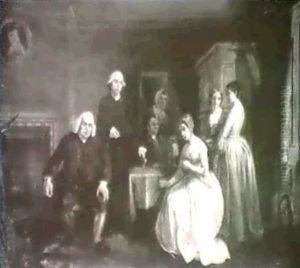William Stewart Watson Paintings
William Stewart Watson was a Scottish painter known for his landscape and historical paintings. Born in 1800, Watson's artistic journey began in his native Scotland, where he developed a deep appreciation for the natural beauty and rich history of his homeland. His early works often depicted scenes of the Scottish countryside, characterized by a romantic and sometimes dramatic portrayal of nature.
Watson's style evolved over the years as he became more influenced by the larger movements within European art, particularly Romanticism, which was prevalent during his lifetime. This movement emphasized emotion and individualism, and it celebrated nature, history, and the sublime. These themes were reflected in Watson's paintings, where he often focused on the grandeur of the Scottish landscapes, the changing skies, and the historical significance of particular locations.
Despite his contributions to Scottish art, Watson did not gain the same level of fame as some of his contemporaries. Nevertheless, his works were appreciated by those who sought to preserve the spirit and visual heritage of Scotland. He exhibited his work in various venues, including the Royal Scottish Academy, where he became an associate member.
Watson's life was not just limited to his painting career; he was also involved in the cultural circles of his time, engaging with other artists and intellectuals. However, much of his personal life and the finer details of his career remain lesser-known, as he was not as well documented as some of his peers. William Stewart Watson passed away in 1874, leaving behind a modest but meaningful body of work that continues to be of interest to those studying the art and culture of 19th-century Scotland.

